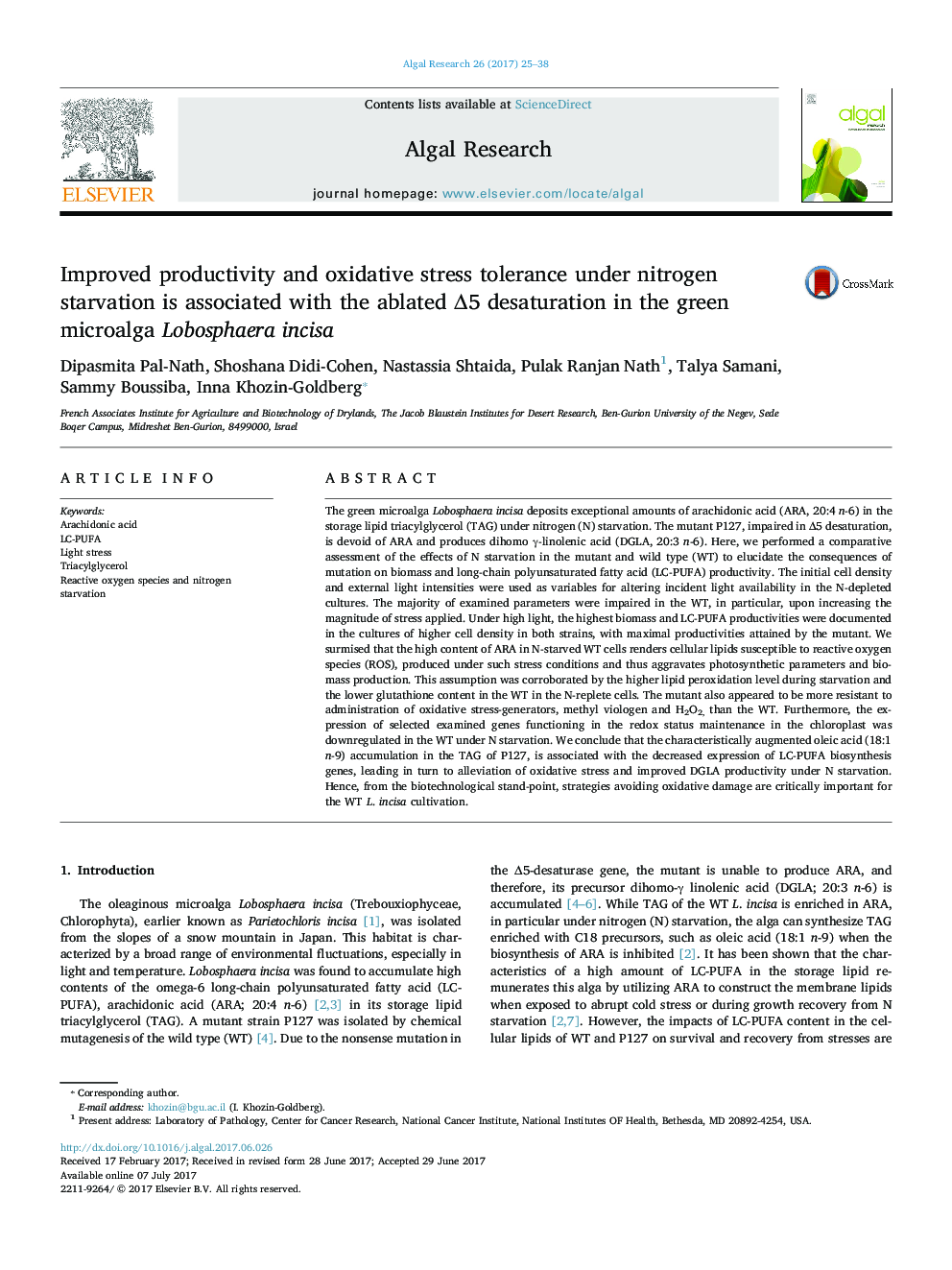| Article ID | Journal | Published Year | Pages | File Type |
|---|---|---|---|---|
| 5478285 | Algal Research | 2017 | 14 Pages |
â¢L. incisa mutant devoid of arachidonic acid attains higher biomass under N starvation than the WT.â¢The wild type L. incisa is more susceptible to oxidative damage than P127.â¢Differential pattern of gene expression is associated with oleic acid accumulation and oxidative stress tolerance in P127.â¢Strategies to avoid oxidative stress are critically important for WT L. incisa cultivation.
The green microalga Lobosphaera incisa deposits exceptional amounts of arachidonic acid (ARA, 20:4 n-6) in the storage lipid triacylglycerol (TAG) under nitrogen (N) starvation. The mutant P127, impaired in Î5 desaturation, is devoid of ARA and produces dihomo γ-linolenic acid (DGLA, 20:3 n-6). Here, we performed a comparative assessment of the effects of N starvation in the mutant and wild type (WT) to elucidate the consequences of mutation on biomass and long-chain polyunsaturated fatty acid (LC-PUFA) productivity. The initial cell density and external light intensities were used as variables for altering incident light availability in the N-depleted cultures. The majority of examined parameters were impaired in the WT, in particular, upon increasing the magnitude of stress applied. Under high light, the highest biomass and LC-PUFA productivities were documented in the cultures of higher cell density in both strains, with maximal productivities attained by the mutant. We surmised that the high content of ARA in N-starved WT cells renders cellular lipids susceptible to reactive oxygen species (ROS), produced under such stress conditions and thus aggravates photosynthetic parameters and biomass production. This assumption was corroborated by the higher lipid peroxidation level during starvation and the lower glutathione content in the WT in the N-replete cells. The mutant also appeared to be more resistant to administration of oxidative stress-generators, methyl viologen and H2O2, than the WT. Furthermore, the expression of selected examined genes functioning in the redox status maintenance in the chloroplast was downregulated in the WT under N starvation. We conclude that the characteristically augmented oleic acid (18:1 n-9) accumulation in the TAG of P127, is associated with the decreased expression of LC-PUFA biosynthesis genes, leading in turn to alleviation of oxidative stress and improved DGLA productivity under N starvation. Hence, from the biotechnological stand-point, strategies avoiding oxidative damage are critically important for the WT L. incisa cultivation.
